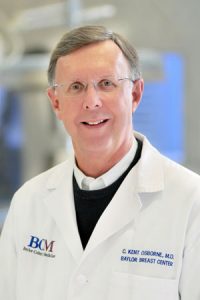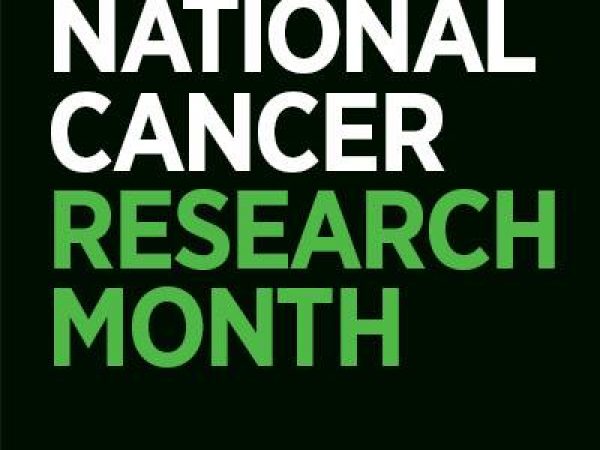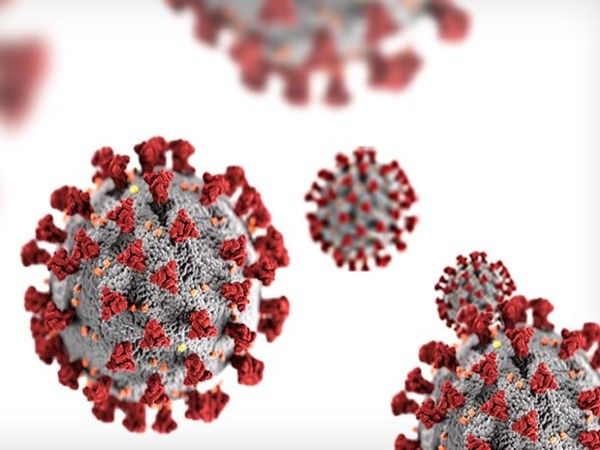SABCS Marks 40 Years
This year, the San Antonio Breast Cancer Symposium (SABCS) marks its 40th anniversary. Symposium organizers will commemorate the anniversary in numerous ways, including the SABCS 40th Anniversary Award Lecture, to be presented this Wednesday by Richard Pazdur, MD, director of the U.S. Food and Drug Administration Oncology Center of Excellence.
Pazdur is expected to discuss the past and future of cancer drug development, which has certainly spurred much of the progress on breast cancer that has taken place over the past four decades. The robust program encompasses many other cornerstones of the progress, from basic, translational, and clinical research to survivor and patient advocacy.
Kent Osborne, MD, a codirector of SABCS, wrote a guest post for Cancer Research Catalyst in 2015 that details the symposium’s growth. We’re happy to present it again. Check back with Cancer Research Catalyst frequently for updates from SABCS, which will take place Dec. 5-9.
Guest Post by Kent Osborne, MD
Director of the Dan L Duncan Comprehensive Cancer Center at Baylor College of Medicine; Codirector of the San Antonio Breast Cancer Symposium
I arrived in San Antonio, Texas, in July 1977, to start my first faculty job as an assistant professor at the University of Texas Health Science Center (UTHSCSA) in the Department of Medicine, Division of Medical Oncology. UTHSCSA was a relatively new medical school and the Division of Medical Oncology was also new, having been split off from Hematology a couple of years earlier. The division chief was Bill McGuire, MD, an endocrinologist by training but already a nationally known researcher in the biology of breast cancer focusing on the estrogen receptor.
Another well-known hemato-oncologist, Chuck Coltman, MD, would soon join the division as clinical director and director of the Cancer Therapy and Research Center (CTRC), where we saw our cancer patients. In 1978, McGuire and Coltman decided to establish a local breast cancer symposium initially designed to provide a venue for the education of oncologists working in the city. The first symposium, held in a small motel near the airport, had no more than 50 attendees. But the speakers were unbelievable, with Drs. Bernie and Ed Fisher, and Marc Lippman, in addition to McGuire and others.
The meeting grew slowly over the next couple of years until McGuire and Coltman decided to change the scope of the meeting to encompass more research by inviting abstracts for oral or poster presentation. McGuire thought that it would be best for clinicians to hear about basic research and for the lab researchers to hear about clinical research and issues affecting patients. Retrospectively, what McGuire was really thinking about at this time was “translational research,” a term that was only coined years later (1991) to describe a “new type of research” during the development of the National Cancer Institute (NCI) Specialized Program of Research Excellence grant program. With this new format, the meeting grew rapidly and was moved to the Hyatt Regency Hotel on the river in downtown San Antonio, and eventually to the Marriott Rivercenter, where it stayed for many years.
McGuire and Coltman experimented a few times with simultaneous sessions, clinical research presentations in one hall and laboratory research in another, but that approach was rapidly abandoned when it became clear that this violated McGuire’s premise that clinicians needed to hear and understand basic research and basic researchers needed exposure to clinical research if we were going to make progress in curing breast cancer.
Although a few attendees complained about the joint sessions, most embraced the idea, which continues to this day. McGuire and Coltman were ahead of their time in fostering the idea of enhancing translation of basic discoveries to the clinic. The symposium was also among the first to include patient advocates in meeting planning and participation in educational and case discussion sessions. Later, Amy Langer, a pioneer in the advocacy movement, would deliver one of the W. L. McGuire Memorial Lectures.
Every year the meeting grew in attendance and soon it was moved to the San Antonio Convention Center, where it remains. For more than two decades the meeting was organized and led by members of the breast program at UTHSCSA. Coltman’s administrative assistant at the medical school was the meeting administrator and the clinicians and basic scientists formed the program and abstract selection committees. Eventually, it became clear that we needed to be more inclusive in the meeting planning and abstract selection processes because the list of attendees was growing, and encompassing guests from more than 100 countries. So, organizers established new program and abstract review committees. Additionally, because the meeting had become so large, they created a separate administrative team at the CTRC to run the business and administrative components.
In 1992, McGuire died after suffering a heart attack while scuba diving in the Caribbean. Suddenly I was asked to assume McGuire’s role as codirector of the meeting with Coltman. Luckily for me, my colleague McGuire had established a smoothly run meeting that almost ran itself under the leadership of Coltman and himself, and their hardworking staff. Despite McGuire’s death, all involved wanted to continue the symposium, which by that time had become the premier breast cancer research meeting in the world.
In 1999, my group and I, including 13 faculty, fellows, grad students, and other staff, decided to move to Baylor College of Medicine in Houston to create a new multidisciplinary breast center in which we could have clinicians, pathologists, biostatisticians, and basic scientists all focus on breast cancer in a single department-like structure. The move presented a challenge for the continuance of the SABCS, but contracts were established to involve our Baylor group working with staff, clinicians, and researchers at the UTHSCSA and CTRC. The directorship of the meeting was shared between Coltman, Peter Ravdin, MD, at UTHSCSA, and myself and continued to prosper and grow to its present size (approximately 8,000 attendees annually).
Given the growth of the meeting and the direction cancer medicine was heading, I thought SABCS needed a change scientifically. The era of targeted therapy and genomic medicine was well underway then and it became clear that clinicians were going to have to understand the molecular pathways that were driving breast cancer in order to think about new treatment strategies. So, about nine years ago, I spoke with Margaret Foti, PhD, MD (hc), chief executive officer of the American Association for Cancer Research (AACR), about how the AACR could bring more science to our symposium and could offer new perspectives on the structure of the meeting itself. After much discussion, the SABCS evolved into a partnership with UTHSCSA/CTRC, Baylor College of Medicine, and the AACR.
Each contributor would have an equal voice in program and abstract review committee membership and the SABCS Executive Committee, while the meeting would continue to be held and administered in San Antonio by the UTHSCSA.
Once again, the meeting evolved in a progressive way to become a global meeting that unites basic, translational, and clinical research with education on breast cancer, something that I don’t think either McGuire or Coltman would have ever imagined in 1978.
I am proud to have been part of this meeting from its onset, and feel privileged to work alongside my distinguished codirectors Virginia Kaklamani, MD, and Carlos Arteaga, MD. We all hope that the SABCS continues until we can say that breast cancer is no longer the public health problem it is today.
Kent Osborne, MD, has served as director of the Dan L Duncan Comprehensive Cancer Center at Baylor College of Medicine since 2004. A physician-scientist who focuses on breast oncology, Osborne received his medical degree from the University of Missouri Medical School and completed his residency training at Johns Hopkins University, followed by a fellowship at the National Cancer Institute. In the lab, his research focus involves the identification of mechanisms of resistance to targeted therapies in breast cancer particularly treatments targeting the estrogen receptor and the HER2 receptor. Osborne has been an AACR member since 1979.




